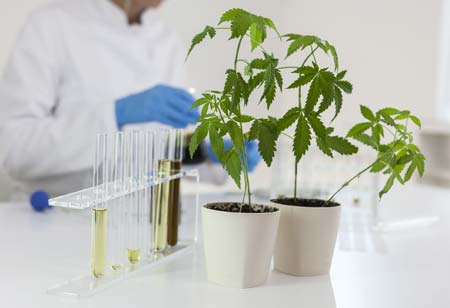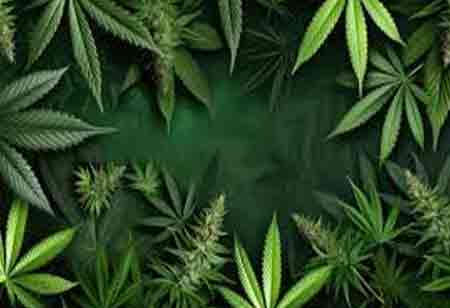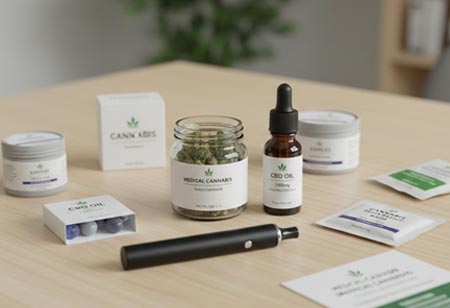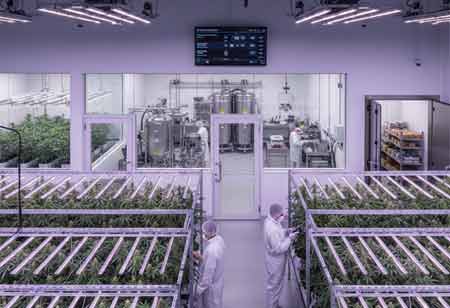Thank you for Subscribing to Cannabis Business Insights Weekly Brief
Significance of Cannabis Testing
Compliance and monitoring are essential to safeguarding the cannabis sector and discouraging customers from purchasing from the illicit market.

By
Cannabis Business Insights | Monday, May 22, 2023
Stay ahead of the industry with exclusive feature stories on the top companies, expert insights and the latest news delivered straight to your inbox. Subscribe today.
The purpose of cannabis testing laboratories is to limit residual pesticides, processing chemicals, and microbial in cannabis products.
FREMONT, CA: Compliance and monitoring are essential to safeguarding the cannabis sector and discouraging customers from purchasing from the illicit market. As cannabis legalization progresses, demand for cannabis testing services has increased to verify that medical and recreational cannabis sold on the market satisfies quality and safety standards and is free of hazardous toxins. However, cannabis testing presents many obstacles, especially in the United States. Testing regulations vary between states and depend on the variety of cannabis from which the crop or product is derived.
Cannabis testing laboratories are in charge of quality control. Cannabis and cannabis-derived goods purchased from a licensed facility are subjected to a battery of tests that examine samples for a variety of constituents that affect product quality and safety. ISO/IEC 17025:2017, which refers to "General requirements for the competence of testing and calibration laboratories," is adhered to by the majority of cannabis testing laboratories. Some go further to comply with AOAC International and ASTM International requirements. All cannabis testing laboratories must be outfitted with sophisticated, sensitive analytical instruments and qualified technicians and analysts trained in each testing method.
As the cannabis industry persists in evolving and cannabis laboratories utilize data to monitor lab performance, these data are becoming increasingly vital for—increasing consumer and healthcare provider confidence, risk management in a rapidly expanding market, and concentrating on quality products.
What is cannabis tested for?
Regulatory testing typically necessitates potency assessments to label the product appropriately. Pesticides, heavy metals, industrial chemicals, and microorganisms or microbial byproducts are also checked for in samples. This section will cover the various testing techniques available for this purpose.
Potency testing
Cannabinoid and terpenoid content are evaluated during potency testing to establish how much CBD and THC a product contains. GC with flame-ionization detection is a rapid method for assessing potency that permits accurate quantification of all the organic chemical species in a sample. Liquid chromatography is a more direct method for comprehensive cannabinoid profiling, as an analyst may additionally determine the amount of cannabinoid acid in a sample. The most prevalent techniques are high-performance liquid chromatography coupled with a diode array detector and liquid chromatography time-of-flight mass spectrometry. In contrast to a conventional UV-vis detector, HPLC-DAD simultaneously collects data over a spectrum of wavelengths.
Pesticide testing
Although the use of pesticides in agriculture is often regulated, cannabis remains banned in many nations and territories. In the United States, cannabis remains illegal at the federal level despite being authorized for recreational and medical use in many states. Hence, the Environmental Protection Agency (EPA) in the United States has not approved a list of pesticides for cannabis. The general protocol for pesticide testing involves an extraction step (to capture pesticides present in the sample), a clean-up step (to remove pigments or interferences that could affect the results), and an analysis step (typically liquid or gas chromatography with tandem mass spectrometry (LC/MS/MS or GC/MS/MS)). QuEChERS (rapid, simple, inexpensive, efficient, robust, and secure) is a well-known solid-phase extraction technique that removes pesticides. Certain chemicals are more receptive to GC analysis than LC; hence many laboratories employ both techniques to ensure that their workflow is sensitive to all the necessary substances.
Microbial testing
Cannabis is screened for yeast, mold, fungi, and typical bacteria such as E. coli and Salmonella. Culture-based detection is a simple method that has been the gold standard since the early 1900s; it requires particular nutrients and ambient conditions. The introduction of molecular diagnostic technologies eliminates the necessity for culture. For instance, quantitative polymerase chain reaction (qPCR) analysis is a high-tech method that allows analysts to collect and amplify all genomes present in a sample. Hence, the genetic barcode can be utilized to identify the microorganisms present in the sample.
Multiple obstacles make cannabis testing challenging. This section examines them in greater depth.
Regulations
Compliance testing mandated by the state for cannabis products has resulted in industry-wide public health protection. Yet, the absence of uniformity creates obstacles and opportunities for what needs to be monitored. In addition, makers of edibles and infused beverages confront their distinct obstacles. Most laboratories must balance regulatory compliance, customer needs, and scientific integrity, resulting in compromises.
Despite the lack of standardization, the sector is transitioning towards a quality-focused operation. For instance, over the past few years, the primary American body for testing standards has proposed and published new guidelines for cannabis testing, processing, cleaning, and transport. Similarly, cannabis companies are beginning to embrace the benefits of CGMPs, purpose-built laboratory informatics that supports regulatory compliance, and advanced data practices that preserve quality and meet the market's increasing complexity.
Capital expenses
A successful laboratory should aspire to have both highly skilled laboratory employees and high-tech, regulatory-compliant instruments. Establishing a cannabis testing lab costs between $2 million and $3 million, depending on the facility's financial capability and testing requirements. In addition, once operational, labs should purchase a high-quality system to prevent long-term risk. However, this can be costly to maintain due to the cost of people, audits, and proficiency exams. In addition, capacity is impacted by the number of quality control samples required for each batch and any re-runs necessitated by non-conformance.






